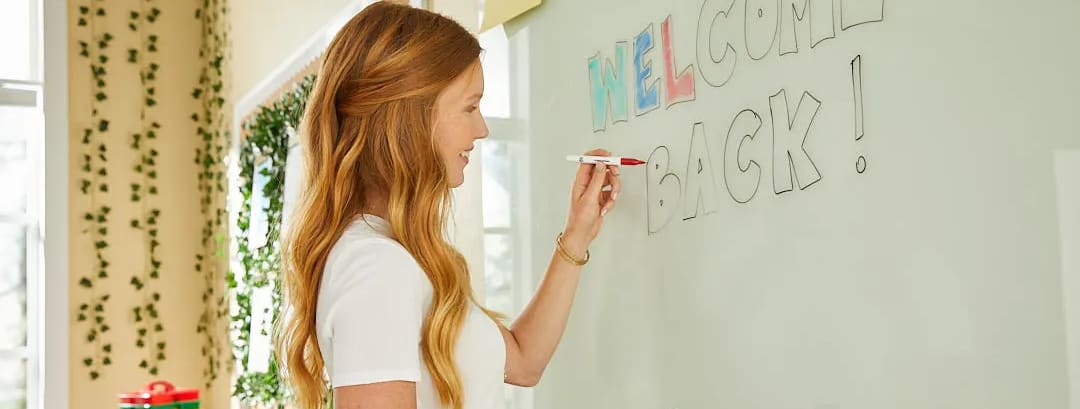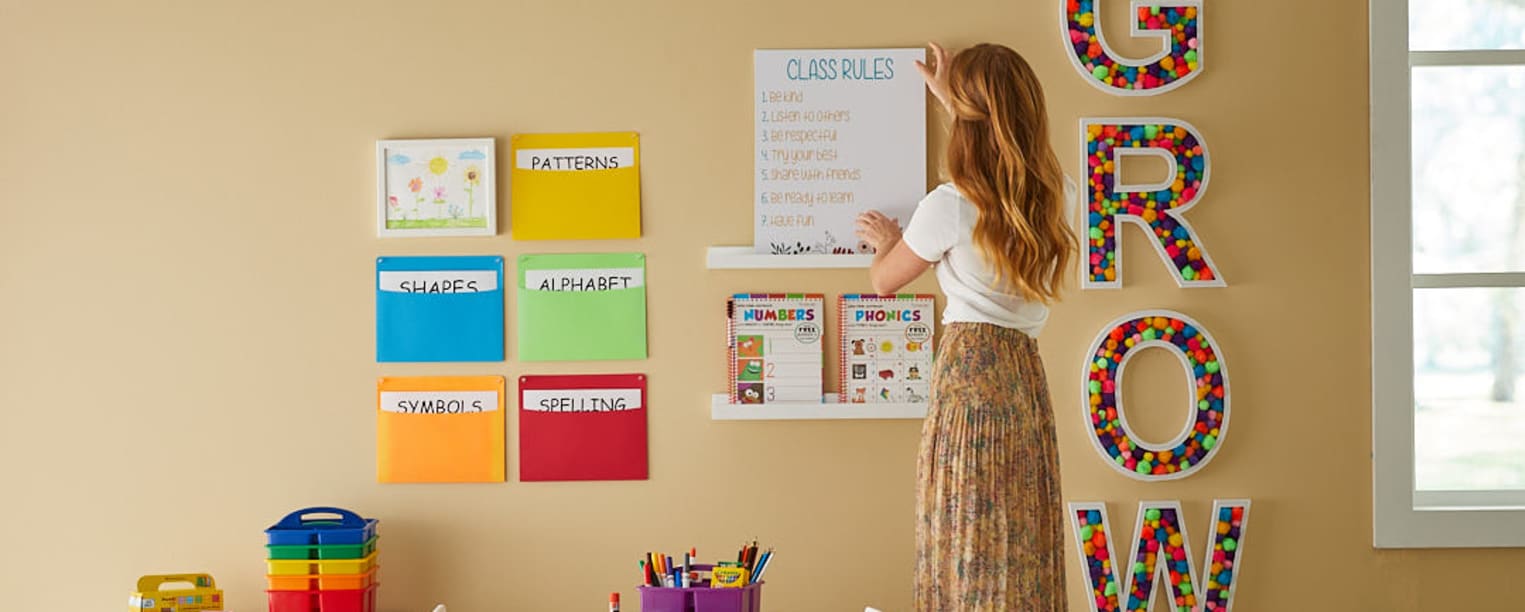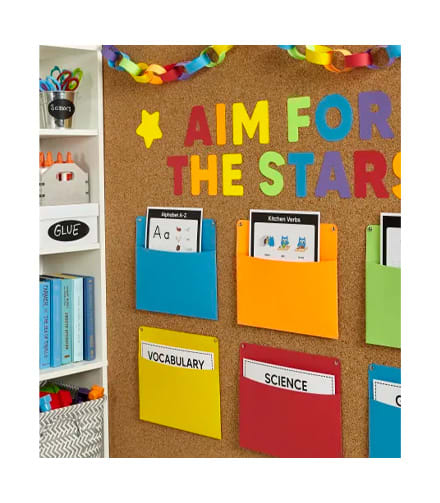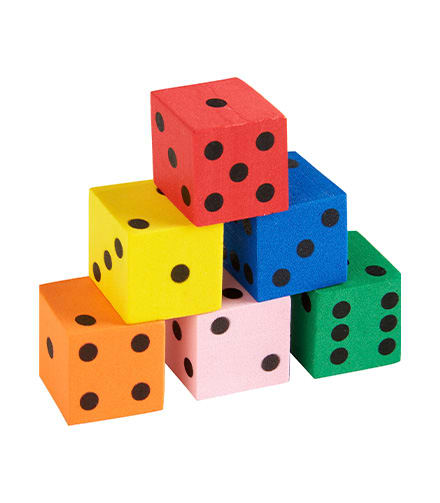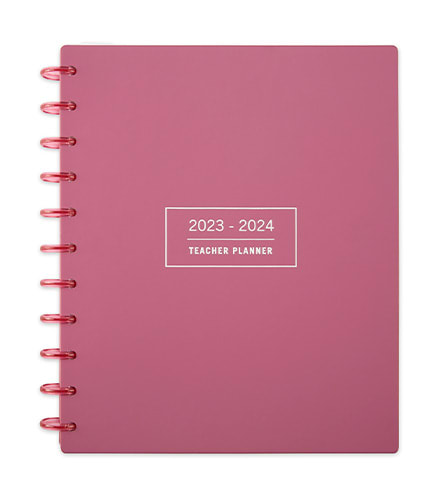Teachers’ Back-to-School Checklist
June 9, 2023
The end of summer can be a hectic time for teachers as they prepare for the new school year. There’s curriculum planning, classroom setup, and materials and supplies to purchase and organize.
However, with planning and preparation, you and your students can have a successful first day. Here’s a back-to-school checklist to keep you on track.
Create a Seating Chart
When asked what teachers should do on the first day of school, veteran educators recommend assigned seating. Many advantages come with creating a seating chart for your students. And at the beginning of the school year, it can help you learn students’ names.
You can also use a seating chart for classroom management issues. For example, you can separate students who talk to each other a lot. Or you can place a student who has trouble paying attention in the front where there are fewer distractions.
You may want to label the desks with students’ names. If classes change each period, consider using a different system, such as numbers on each desk. You can post the seating chart for every period on the bulletin board.
Also, consider the room layout. Seating arrangements can affect a student’s engagement and class participation. You can draw the layout in advance to be sure the desks will fit. Here are a few popular seating arrangements:
- Groups. Three desks are side by side together, facing three other desks. This grouping — known as a pod — is helpful in classrooms where students do a lot of collaboration.
- Stadium seating. In this layout, rows of seats are angled to make a V. This setup can work well with older students. The angled layout takes up less floor space, and it’s easy for the teacher to see all students.
- U-shape. Arranging the desks into a large U-shape encourages whole-class discussions. Depending on the number of desks, your classroom might need one smaller U in front of a larger one
Supplies that can help include:
Outline Classroom Rules and Procedures
Communicating classroom rules is one of the most important things a teacher can accomplish during the first few days of school. Your students can benefit from having clear expectations and procedures.
When students understand your expectations, the classroom runs smoothly, and you maximize student learning. Teachers who express high expectations for students typically see better performance.
Try to explain procedures at the beginning of the year and stay consistent. Consider reinforcing positive behavior and imposing consequences for inappropriate behavior. Over time, consistent habits — such as raising your hand to speak — can become a classroom norm.
Some teachers like presenting classroom rules with a PowerPoint presentation. Others reinforce procedures with signs on bulletin boards and whiteboards. Below are some procedural ideas to teach on the first day of school:
- How does a student get a pass for the restroom?
- Where will students find worksheets and other materials?
- Designate an area in the room, such as a whiteboard, where you post the day’s agenda and homework assignments.
- What is the homework policy? How do students turn it in, and what happens if it’s late?
- What is your signal to gain students’ attention?
- If students finish assignments early, what should they do?
- What happens when students don’t follow the classroom rules?
- What is the end-of-day routine (such as putting supplies away)?
- Rules for using technology — laptop, cellphone, tablet, etc.
- What happens when a student is tardy?
Supplies that can help include:
Make Sure You Have All Supplies (and Know Where They Are)
Consider taking an inventory of the supplies in your classroom and make a list of the things you need. Find out what materials the school provides.
You can include binders, folders, and other filing systems for lesson plans and printed materials like worksheets. You may need tools like dry-erase markers and erasers for sharing concepts and reminders. Your students may also need pencils, paper, and other school supplies.
Supplies for decorating the classroom include construction paper, labels, and posters. And you’ll need plenty of storage to keep things in order.
Supplies that can help include:
- Folders
- Hanging file folders
- File labels
- Rolling cart
- Utility cart
- Plastic storage drawers
- Clipboards
- Binders
- Copy paper
- Notebook paper
- Construction paper
- Posters and classroom decorations
- Pencils
- Dry-erase marker
- Dry erasers
- Letter trays
- Monthly calendar
- Planner
- Teacher planner
- Desk organizers
- Step stool
- Lunch box
- Lockbox
- Water bottle
Make Copies of All Important Documents You’ll Distribute to Students
Find out about the printing resources at your school and if you’ll be reimbursed for outsourcing printing when needed. Consider pre-printing copies of all documents you intend to distribute to students.
This could include school and classroom policies, a newsletter, a calendar for the semester, an emergency contact card, a welcome letter, a syllabus, and homework assignments.
Most of your parent contact will likely be electronic. You can include instructions on connecting to the school’s student information system, your email and phone numbers, and any websites, social media groups, or email distribution lists they can join.
Supplies that can help include:
- Reams of paper
- Printing services
- Folders
- Index cards
Double-Check All Your Classroom Tech Works
Technology plays a large part in the education system, especially with the shift toward remote learning.
Before the school year starts, test all the technology in your classroom to make sure it works, and you know how to operate it. Familiarize yourself with computers or tablets so you can troubleshoot students’ questions. Your school may use any of the following technologies:
- Edtech or online learning software
- Video conferencing platforms
- A smart video camera for remote classes
- Learning management system (LMS) that includes digital textbooks, online tests, and quizzes
- Tablets
- E-books
- Smartboards (interactive screens you can project from the computer and write on)
- Social media
Supplies that can help include:
Greet Students and Introduce Yourself
A good relationship between teachers and students is conducive to learning. It’s also natural for students to want to know about your background. Consider sharing information about yourself with students to help build trust and respect.
There are a lot of creative ways to introduce yourself to your class. Some teachers send students letters over the summer. Others create slideshows or photo books showing their interests and pets.
Icebreaker games allow students and teachers to learn more about each other. Completing and coloring an “All About Me” poster can be another fun and creative activity for you and your students.
Icebreakers can help you and your students quickly learn about each other. One idea is a “Figure Me Out” math game where students can learn facts about you through math problems. For example, “18 ÷ 9 = the number of pets I have.”
Another favorite icebreaker encourages students to get creative. It’s referred to as the “Summer Story Box.” Take items that represent what you did over the summer and put them in a box. Examples could be a seashell from the beach, a fishing lure, or a flower from your garden.
Divide students into small groups and give them an object. Ask them to make up a story about how you got it. Have the students share their stories. After hearing their stories, you can tell the real story related to the object.
Supplies that can help include:
Get Organized for the First Day of School
Many moving pieces are involved in managing the first day of school. Planning ahead can allow you to welcome your students to a colorful, orderly classroom with confidence.
You can use this checklist to help make sure everything is in order so you and your students can have a successful first day of school.
About the Author
Lauren Jiles-Johnson is a tutor, mentor, and Board President of Waukegan to College, a college-readiness organization in Waukegan, Illinois. Waukegan to College helps 5th- to 12th-grade students achieve their dream of being the first in their families to attend college.
All content provided herein is for educational purposes only. It is provided “as is,” and neither the author nor Office Depot warrants the accuracy of the information provided, nor do they assume any responsibility for errors, omissions, or contrary interpretation of the subject matter herein.
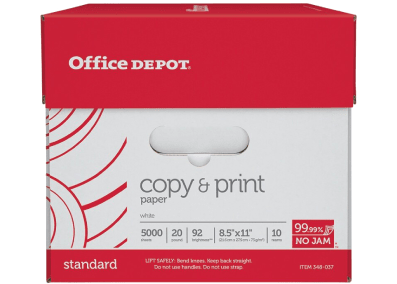
))
))
